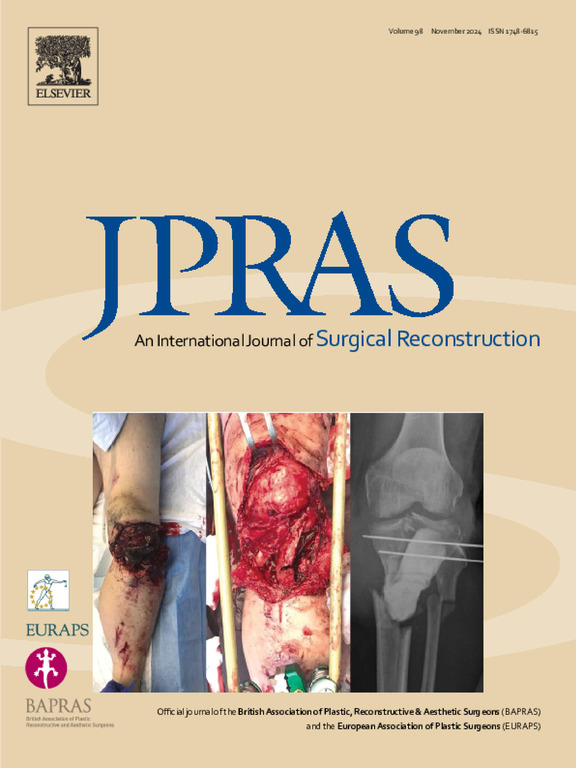Preoperative ultrasound evaluation for decompressive surgery for occipital neuralgia: Preliminary results of a case-control study
IF 2.4
3区 医学
Q2 SURGERY
Journal of Plastic Reconstructive and Aesthetic Surgery
Pub Date : 2025-06-03
DOI:10.1016/j.bjps.2025.05.040
引用次数: 0
Abstract
Although no consensus yet exists on the pathogenesis of occipital neuralgia, alterations in the soft tissues surrounding the occipital nerves have been recently demonstrated. To investigate potential differences in these tissues between patients and healthy subjects, we decided to use ultrasound in the study of peripheral neurological pathology. Twenty patients who underwent occipital nerve decompression surgery were included in this retrospective observational study. A group of twenty-two healthy volunteers was considered as a control group for the ultrasound evaluation of the occipital region. Ultrasound was performed to detect morphological alterations and to measure the cross-sectional areas of the greater occipital nerve and the occipital artery in both groups. Pain during the preoperative examination was significantly higher in patients. Ultrasound-detected pathological alterations of the greater occipital nerve were observed in 16 out of 20 patients and 3 out of 22 healthy subjects. Patients suffering from occipital neuralgia could also present perineural fibrosis and morphological alterations of the occipital artery, which were generally not detected in healthy subjects.
During surgery, the appearance of the soft tissues was documented, and the crossing point between nerve and artery was checked. In all subjects evaluated, the greater occipital nerve was bilaterally identified throughout its course. Moreover, in 17 patients out of 20, the preoperative location of pain in the occipital region matched with the contact point of the greater occipital nerve with the occipital artery observed during surgery. Ultrasound appears to be a useful tool for the preoperative evaluation of the trigger points in the treatment of occipital neuralgia.
枕神经痛减压手术的术前超声评价:病例对照研究的初步结果
虽然枕神经痛的发病机制尚未达成共识,但最近已经证明枕神经周围软组织的改变。为了研究这些组织在患者和健康受试者之间的潜在差异,我们决定使用超声来研究周围神经病理学。20例接受枕神经减压手术的患者被纳入这项回顾性观察性研究。选取22名健康志愿者作为枕区超声检查的对照组。超声检测两组大鼠枕大神经和枕动脉的形态变化,测量枕大神经和枕动脉的横截面积。术前检查时疼痛明显加重。20例患者中有16例和22例健康者中有3例出现枕大神经病理改变。枕神经痛患者还可出现神经周围纤维化和枕动脉形态学改变,而这些在健康人中通常未被发现。手术中,记录软组织的外观,并检查神经和动脉之间的交叉点。在所有被评估的受试者中,在整个过程中都发现了双侧枕大神经。此外,在20例患者中,有17例患者在手术中观察到枕区疼痛的术前位置与枕大神经与枕动脉的接触点吻合。超声似乎是一个有用的工具,术前评估的触发点在治疗枕神经痛。
本文章由计算机程序翻译,如有差异,请以英文原文为准。
求助全文
约1分钟内获得全文
求助全文
来源期刊
CiteScore
3.10
自引率
11.10%
发文量
578
审稿时长
3.5 months
期刊介绍:
JPRAS An International Journal of Surgical Reconstruction is one of the world''s leading international journals, covering all the reconstructive and aesthetic aspects of plastic surgery.
The journal presents the latest surgical procedures with audit and outcome studies of new and established techniques in plastic surgery including: cleft lip and palate and other heads and neck surgery, hand surgery, lower limb trauma, burns, skin cancer, breast surgery and aesthetic surgery.

 求助内容:
求助内容: 应助结果提醒方式:
应助结果提醒方式:


